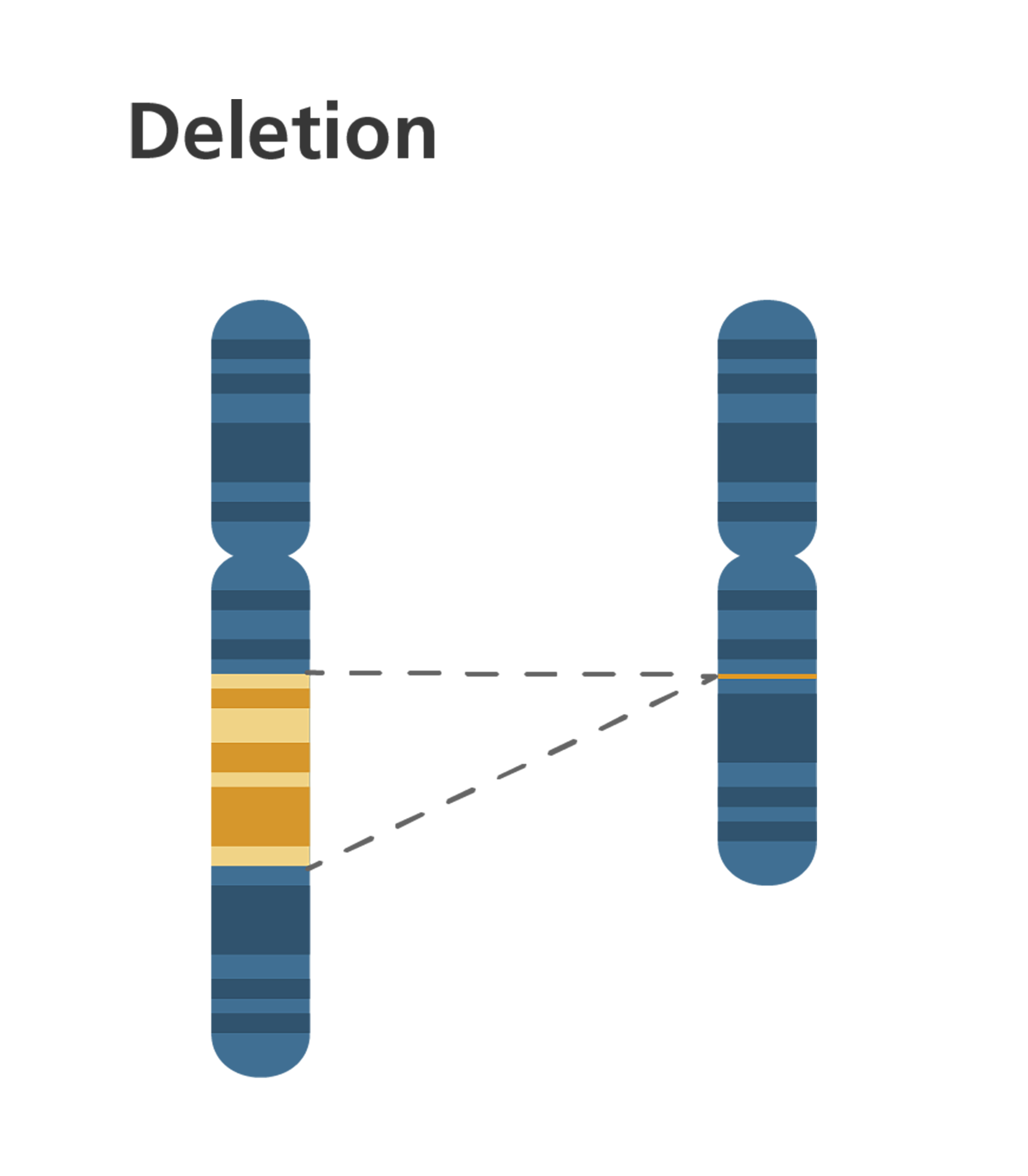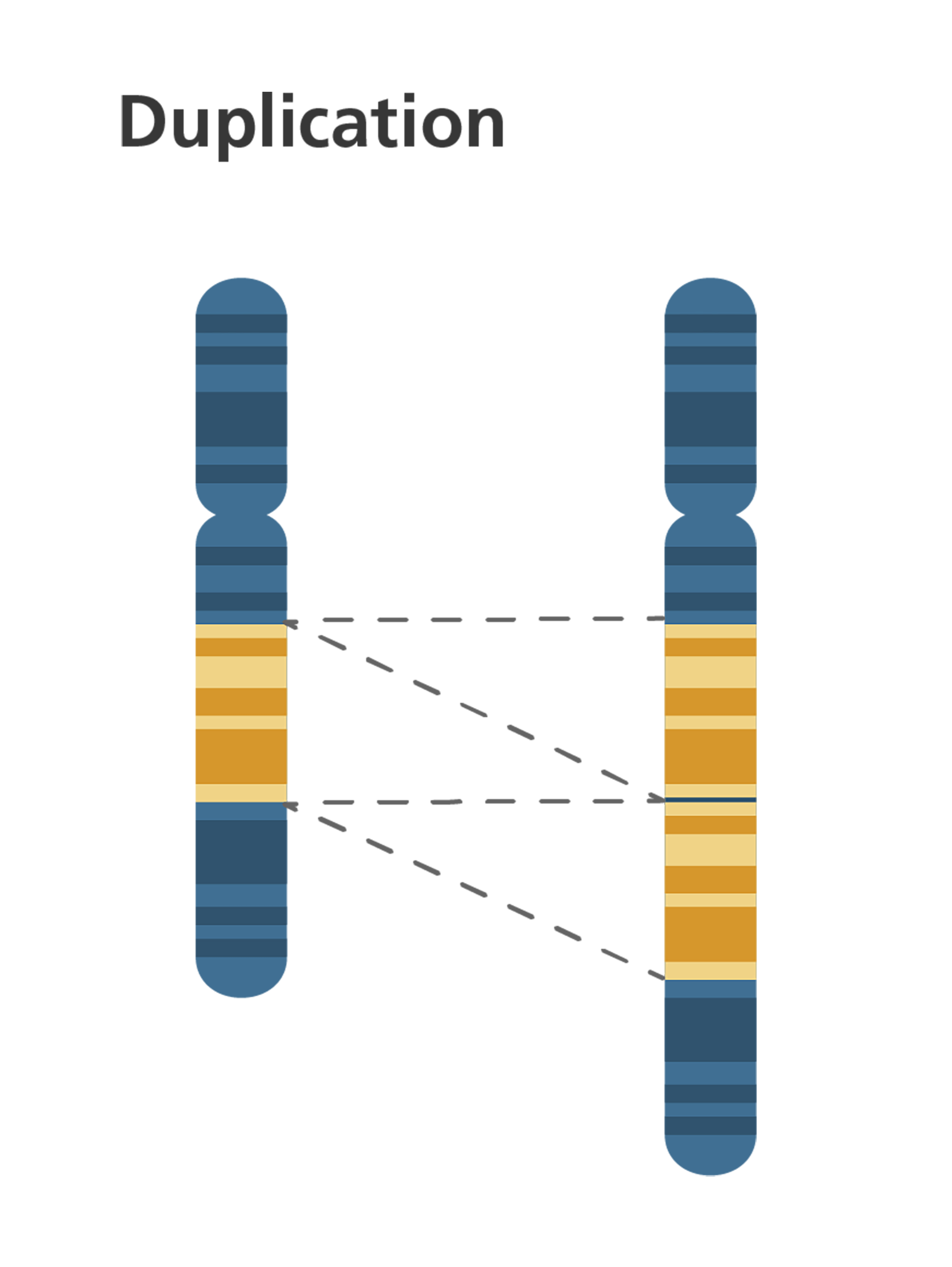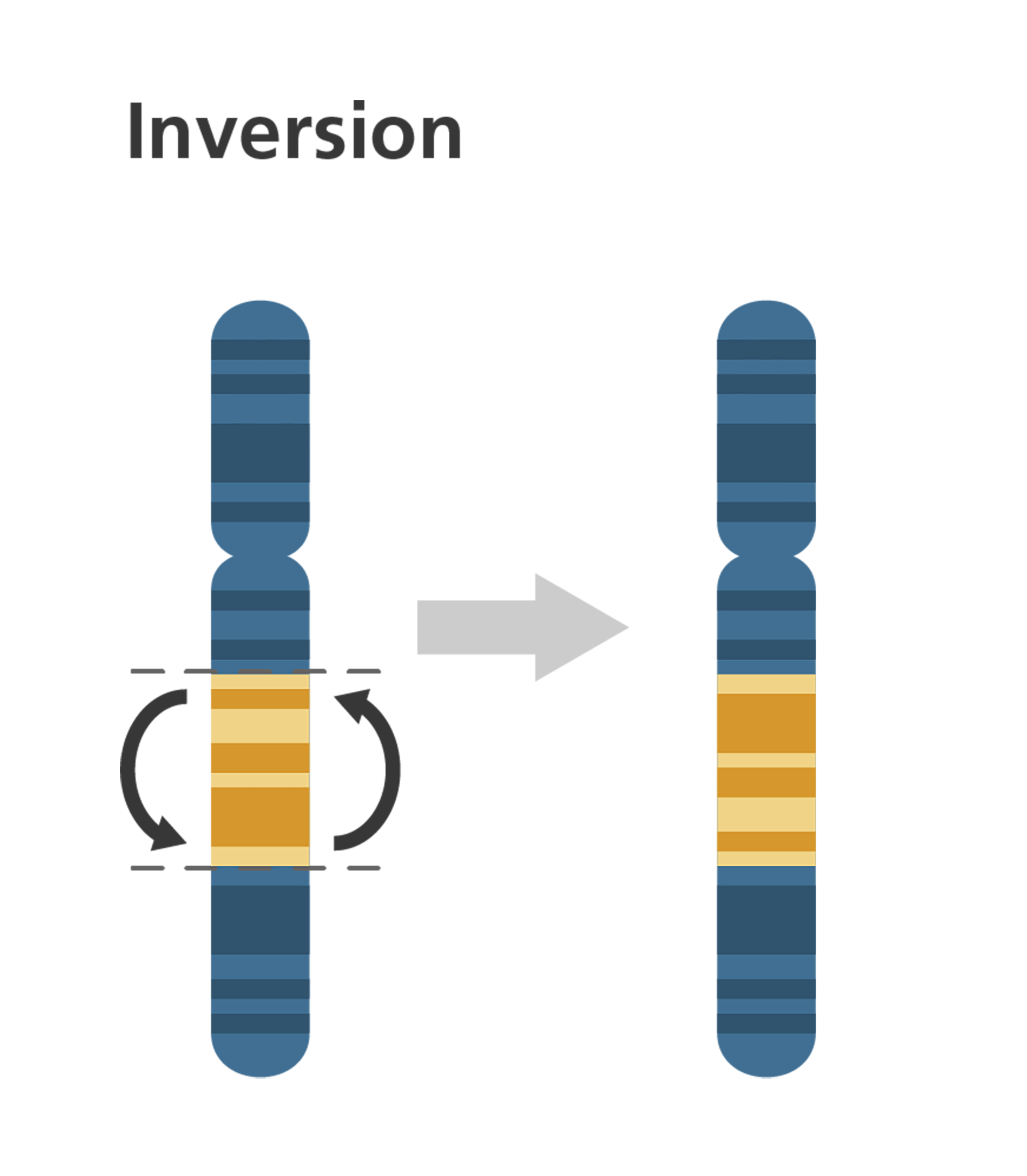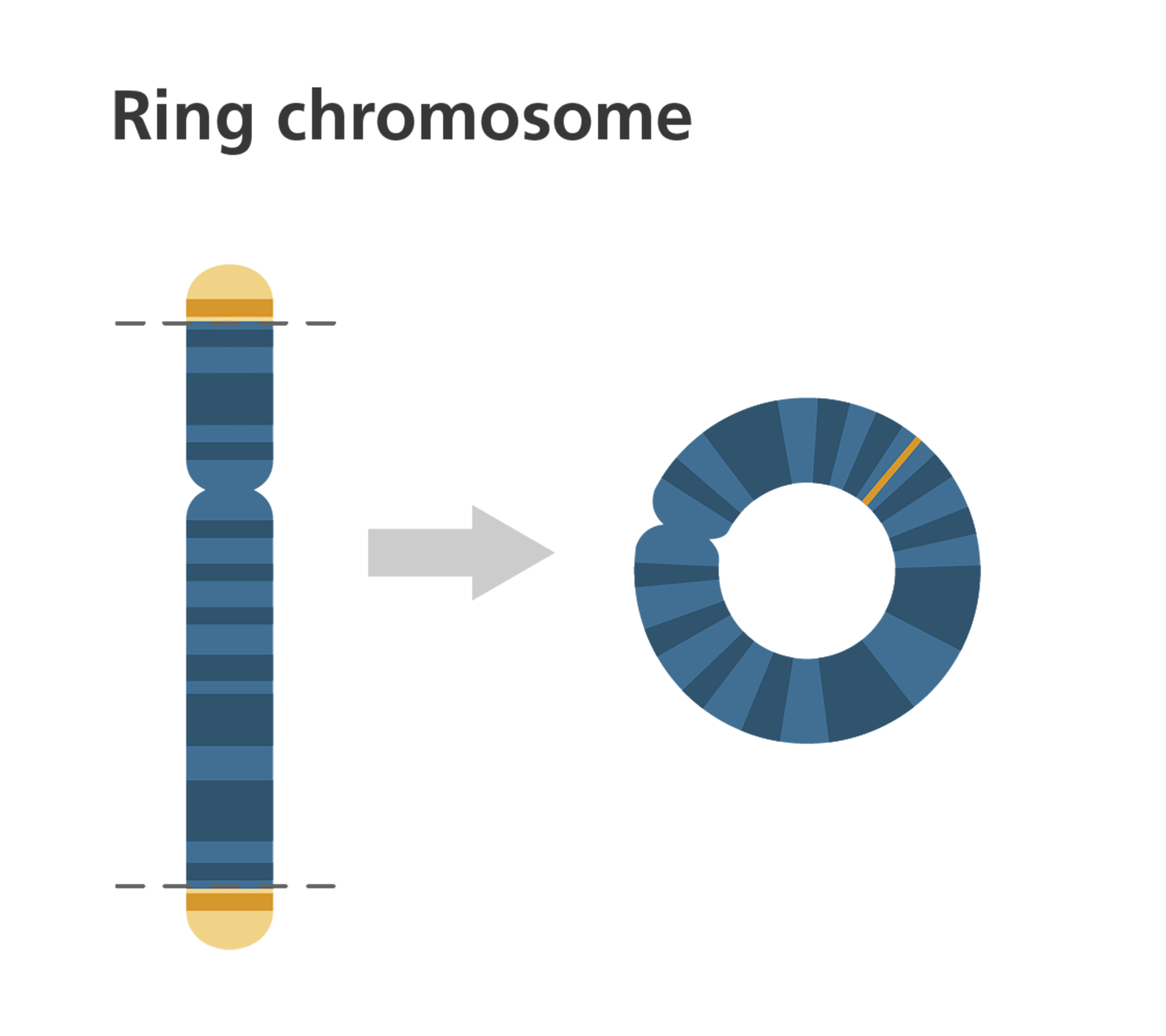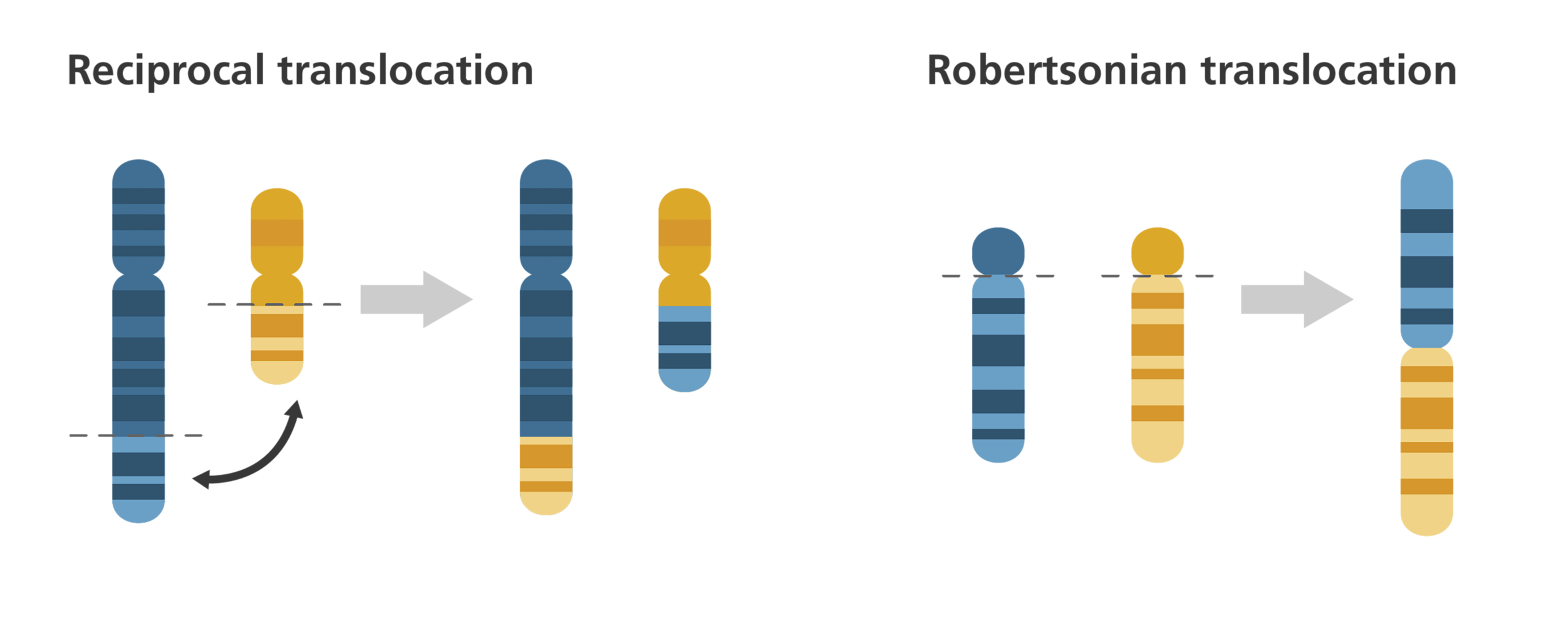What is a chromosome condition?
Image credit: Cytocell Ltd. via Science Photo Library
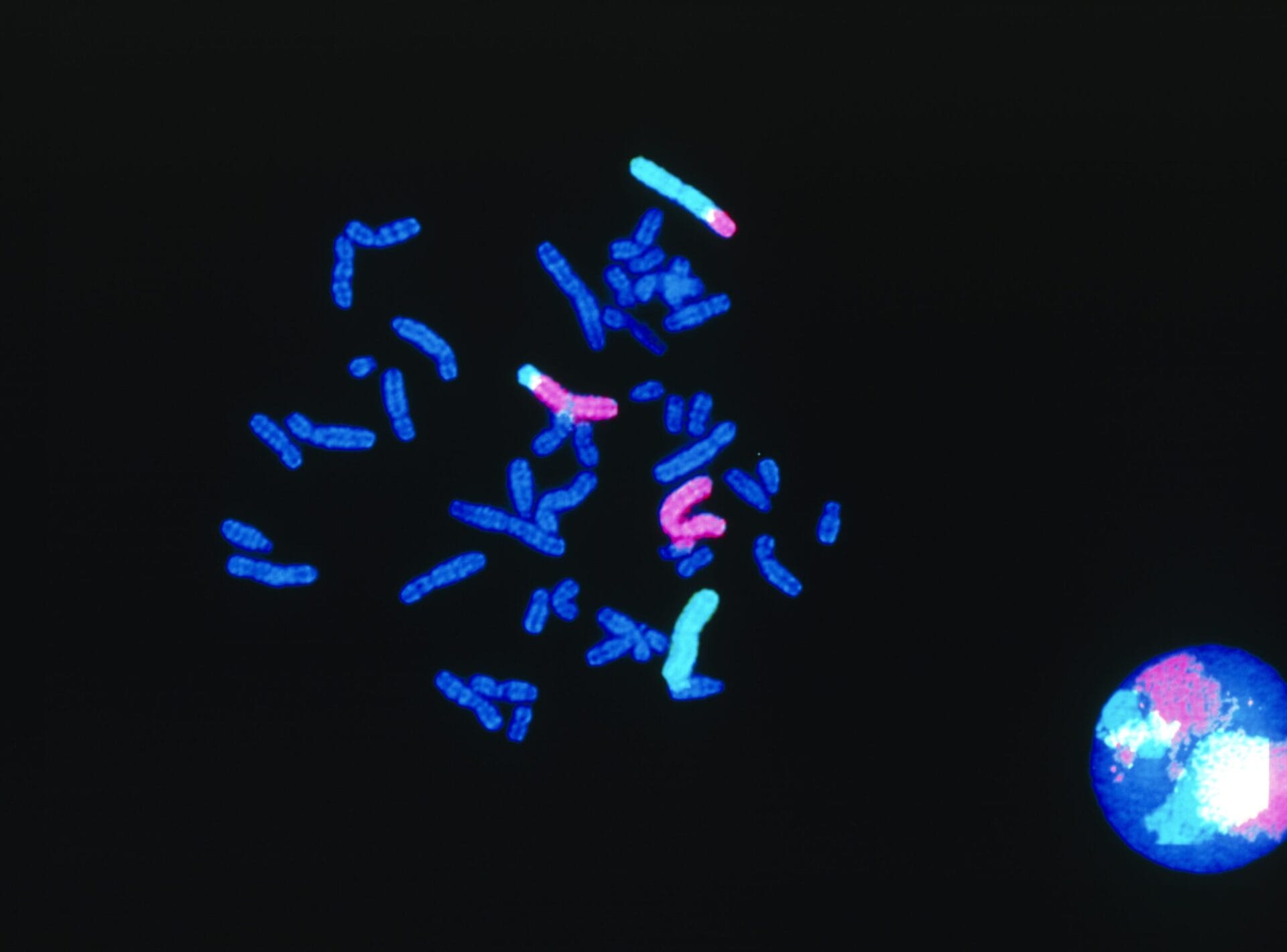
A chromosome condition results from a change in the number or structure of chromosomes.
- Each of our chromosomes has a characteristic structure. Looking at the set of chromosomes and their structure under the microscope is called a ‘karyotype’.
- Deviations from the typical karyotype are called chromosomal abnormalities.
- While some of these deviations have no effect, others are associated with clinical chromosomal conditions – such as Down syndrome, which is associated with an extra chromosome 21.
What is a chromosome condition?
- Our chromosomes each have a characteristic structure.
- A set of chromosomes, as seen under a microscope, is known as a karyotype.
- Historically, scientists have used a staining technique that colours the chromosomes into a banding pattern.
- These banding patterns make each of our individual chromosomes easier to identify, like a map.
- Any deviation from the typical karyotype is known as a chromosome abnormality – for example, the loss or gain of whole chromosomes or regions of chromosome.
- Some chromosome abnormalities have no effect, while some are associated with clinical disorders.
What are numerical deviations?
- The most severe chromosome conditions are caused by the loss or gain of whole chromosomes, which can affect hundreds, or even thousands, of genes and are usually incompatible with life, resulting in miscarriage. Around 80% of all pregnancy losses in the first trimester are caused by this sort of chromosome condition.
- Some numerical deviations are smaller or affect relatively small numbers of genes. The most common numerical abnormalities that affect children are listed in Table 1. Down syndrome is the most common.
- Trisomy means the presence of all or part of an extra copy of a particular chromosome. For example, Down syndrome is called trisomy 21, because it affects chromosome 21.
Table 1: The most common numerical deviations that affect children
| Syndrome name | Abnormality | Incidence |
|---|---|---|
| Down | Trisomy 21 | 15 in 10,000 |
| Edwards | Trisomy 18 | 3 in 10,000 |
| Patau | Trisomy 13 | 2 in 10,000 |
| Turner | Monosomy X | 2 in 10,000 |
| Klinefelter | XXY | 10 in 10,000 |
| XXX | XXX | 10 in 10,000 |
| XYY | XYY | 10 in 10,000 |
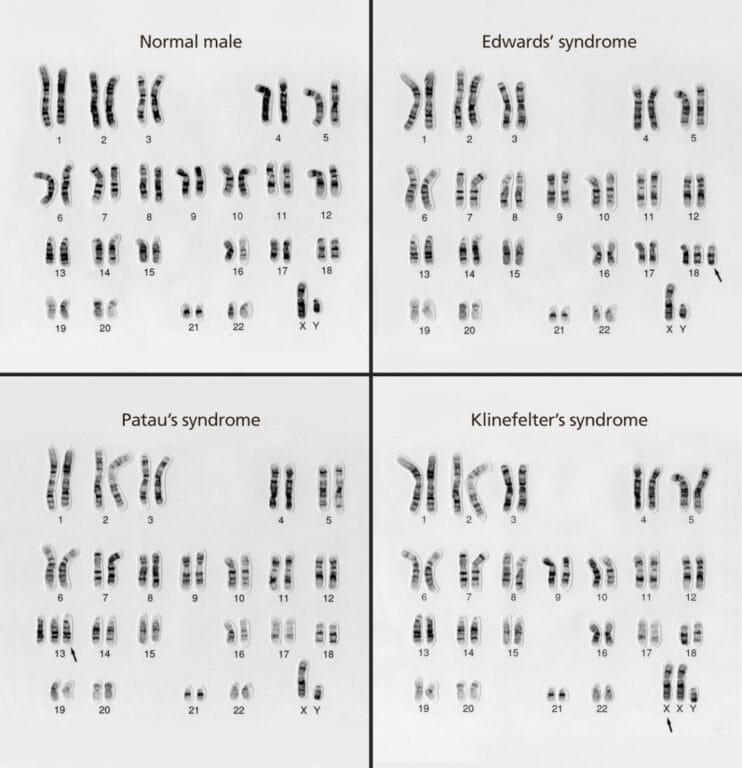
What are structural deviations?
- Structural abnormalities are when large sections of DNA are missing or added to a chromosome.
- Balanced structural abnormalities involve rearranging the genetic material with no overall gain or loss.
- Unbalanced structural abnormalities involve genetic material being gained or lost.
- Balanced structural abnormalities can have an immediate effect, but the major consequence is the production of eggs or sperm with incomplete or partially duplicated sets of chromosomes.
- Even tiny unbalanced structural abnormalities can affect many genes and, consequently, have severe effects on the individual – as listed in Table 2.
- Structural abnormalities can take several forms:
- Deletion: a mutation causes part of the chromosome to be missing.
- Duplication: a mutation causes part of the chromosome to be repeated, resulting in extra genetic material.
- Translocation: a mutation causes one portion of a chromosome to be moved to a different part of the chromosome (intrachromosomal) or to a different chromosome altogether (interchromosomal). There are two key types of translocation:
- reciprocal: segments from two different chromosomes are exchanged
- Robertsonian: an entire chromosome attaches to another.
- Inversion: a mutation results in a portion of a chromosome being in the opposite orientation (inverted).
- Ring: when a portion of a chromosome has broken off and formed a circle or ring.
Table 2: Unbalanced structural abnormalities
| Syndrome name | Abnormality | Incidence |
|---|---|---|
| Wolf-Hirschhorn | Deletion from tip of short arm of chromosome 4 | 2 in 100,000 |
| Cri-du-chat | Deletion from tip of short arm of chromosome 5 | 2 in 100,000 |
| WAGR syndrome | Microdeletion from short arm of chromosome 11 | 0.1 in 100,000 |
| Prader-Willi/Angelman | Microdeletion from short arm of chromosome 15 | 7 in 100,000 |
| DiGeorge | Microdeletion from long arm of chromosome 22 | 25 in 100,000 |
How do chromosome abnormalities occur?
- Chromosome abnormalities usually occur when there is an error in cell division resulting in cells with too few or too many copies of a chromosome.
- Some happen during embryo development or are inherited from a biological parent.
- Most chromosome originate in the egg or sperm (gametes) and are present in every cell in the body:
- Typically, during the formation of gametes, the two pairs of chromosomes separate in a process called meiosis. This results in just one copy of each chromosome in the gametes (as opposed to the two copies found in other cells of the body).
- Errors in this separation process can lead to the formation of gametes with incomplete sets of chromosomes or additional whole or parts of chromosomes. This is known as meiotic nondisjunction.
- Factors that can increase the risk of chromosome abnormalities include greater maternal age and environmental factors such as exposure to certain drugs.
- Even tiny changes in the chromosome structure can affect multiple genes and have significant effects.
